SPECIALS


SPECIALS
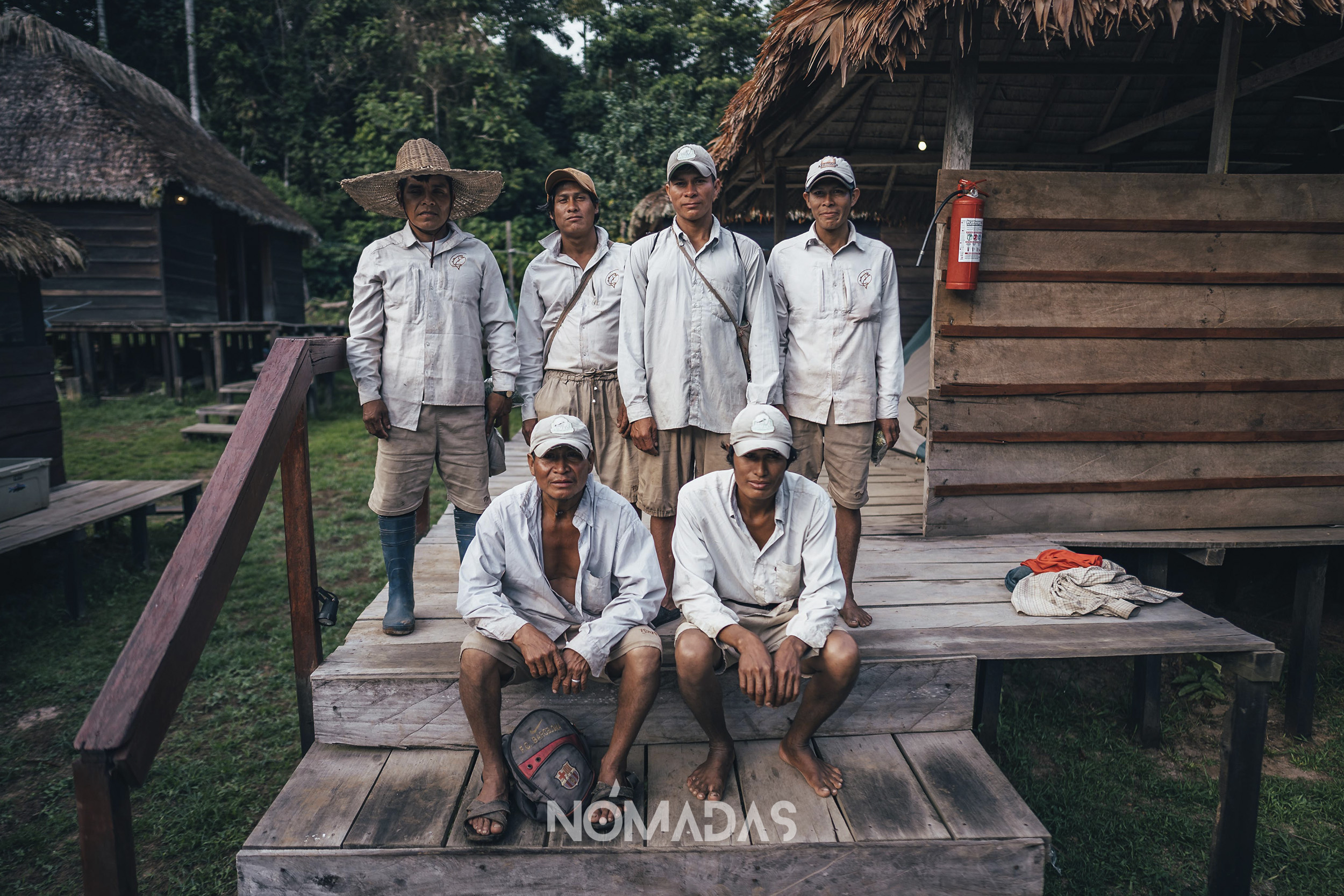
Tourism based on sustainable fishing with mandatory return of catch, a source of income and employment in the northern TIPNIS.
February 8th, 2023
The original inhabitants of the TIPNIS know that the forest is a living being that, if not treated well, dies. For this reason, developing tourism in a sustainable manner not only brings them benefits, but also helps to protect it.

Roberto Navia
Journalist
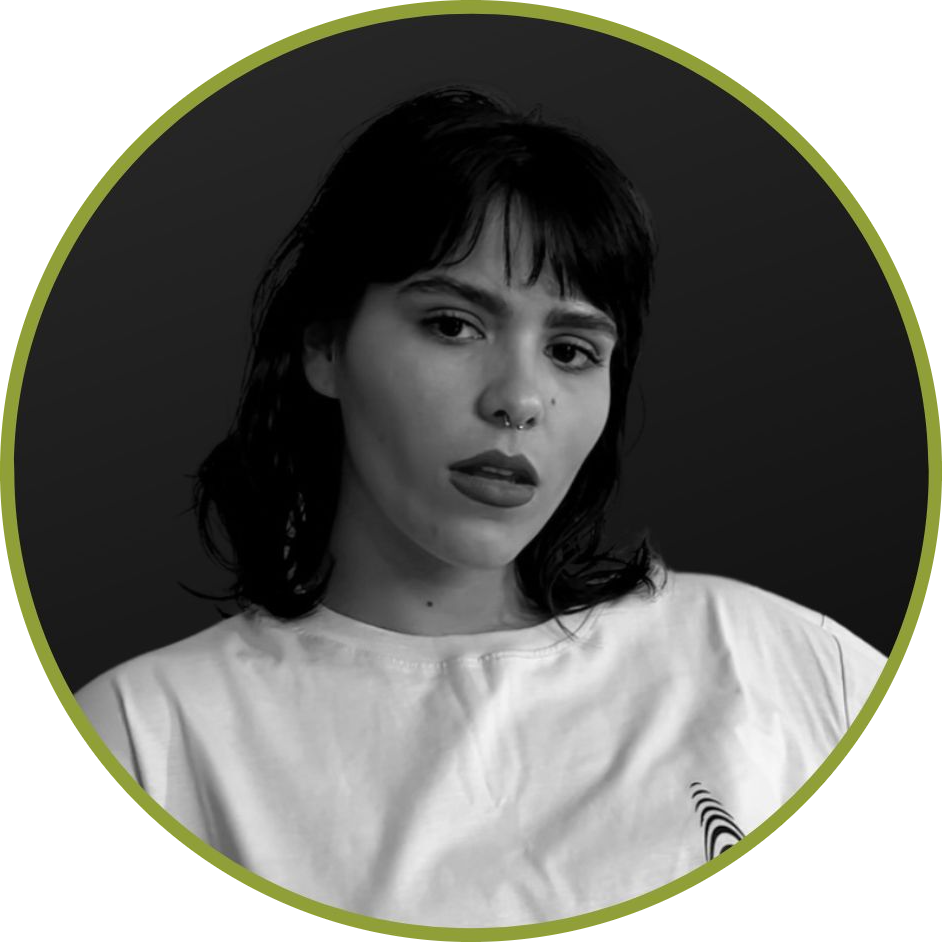
Lisa Corti
Translation to English

Daniel Coimbra
Photographer
The afternoon walks at a discreet pace in Oromomo and the wooden houses -a good part of them- are empty. The inhabitants are lining up to process their identity cards, taking advantage of the fact that, this October 2022, a SEGIP commission had arrived for that purpose.
Oromomo is one of five communities located on the banks of the upper Sécure River, near Ushve, Areruta, Palmar de Aguas Negras and Asunta.
The ancestral inhabitants of this corner of the Amazon, also known as the Isiboro Sécure Indigenous Territory and National Park (TIPNIS), do not like waiting in line. But now that there is an opportunity to exist for the Bolivian State, through a card, they do not want to miss it. In any case, the splendid sun finds a border in the roofs of palm leaves of the corridors, and the wait in line becomes friendly because it is also a good time to talk with that peace of the countryside that here is a constant that never tires.
Oromomo is one of the five communities located on the banks of the upper zone of the Sécure River, near Ushve, Areruta, Palmar de Aguas Negras and Asunta. To say near or far is relative in the forests of the TIPNIS. The passage of time is not a matter of headache for the historical inhabitants of this land that moves to the rhythm of long walks along the jungle trails, to the swaying of the water that pushes the canoes and also to the landing of airplanes that bring international visitors in search of dorado, the fish jewel that has allowed them to develop sustainable tourism under the umbrella of the fishing with return carried out by the Indigenous Tourism Association of the Secure Alto, and the Tsimane project.
The National Service of Protected Areas (SERNAP), shows, in its web page, the dorado fishing with obligatory return, as one of the tourist attractions that takes place in the TIPNIS.
He explains that this activity is carried out in areas with lush vegetation, rivers, lagoons, and a wealth of wildlife, directly benefiting the communities of Oromomo, Ushve, Areruta, Palmar de Aguas Negras and Asunta, Santa Rosita, Tres de Mayo, El Carmen, San Antonio, San José de Angosta.
Much of the TIPNIS has not been explored by science. In 2022, a team of biologists and photographers from a world-renowned television network conducted an expedition to the farthest reaches of the protected area.
«The indigenous communities in both areas maintain traditional forms of natural resource management, and have two associations for the development of community tourism, which includes fishing with obligatory return of catch. In addition, 20 communities in both sectors benefit from the project,» says SERNAP, which also explains that the TIPNIS population is represented by the Moxeño, Yuracaré and Tsimane ethnic groups and that there are more than 50 indigenous communities within the area.
Much of the TIPNIS has not been explored by science. In 2022, a team of biologists and photographers from a world-renowned television network conducted a month-long expedition to the farthest reaches of the protected area, including the transition zone of two biomes, between the plains and the mountains, where there are endemic species that have not yet been recorded.
Marcelo Pérez, director of the Tsimane project, accompanied the scientists and remembers the astonished look on their faces as they dived into turquoise pools in crystal-clear rivers.
The yuracaré Roycer Herbi, who is a throwback fishing guide, was also close by, observing everything, looking at the aquatic cameras with which the scientists were taking images underwater.
Roycer was observing, but the scientists were also observing him. They had in front of them a boy not more than 25 years old, curious as a cat, passionate about photographs because while they were working, he was with his cell phone recording everything, or behind them watching their computers and other equipment he had never seen in his life.
It is likely that Roycer, in the near future, will be part of an international program in which he will learn to take professional photographs and thus record and study the TIPNIS from the inside because who else but him, who knows the protected area inside out and also the threats it faces.
—I really like taking pictures of this paradise, he says, excited.
***
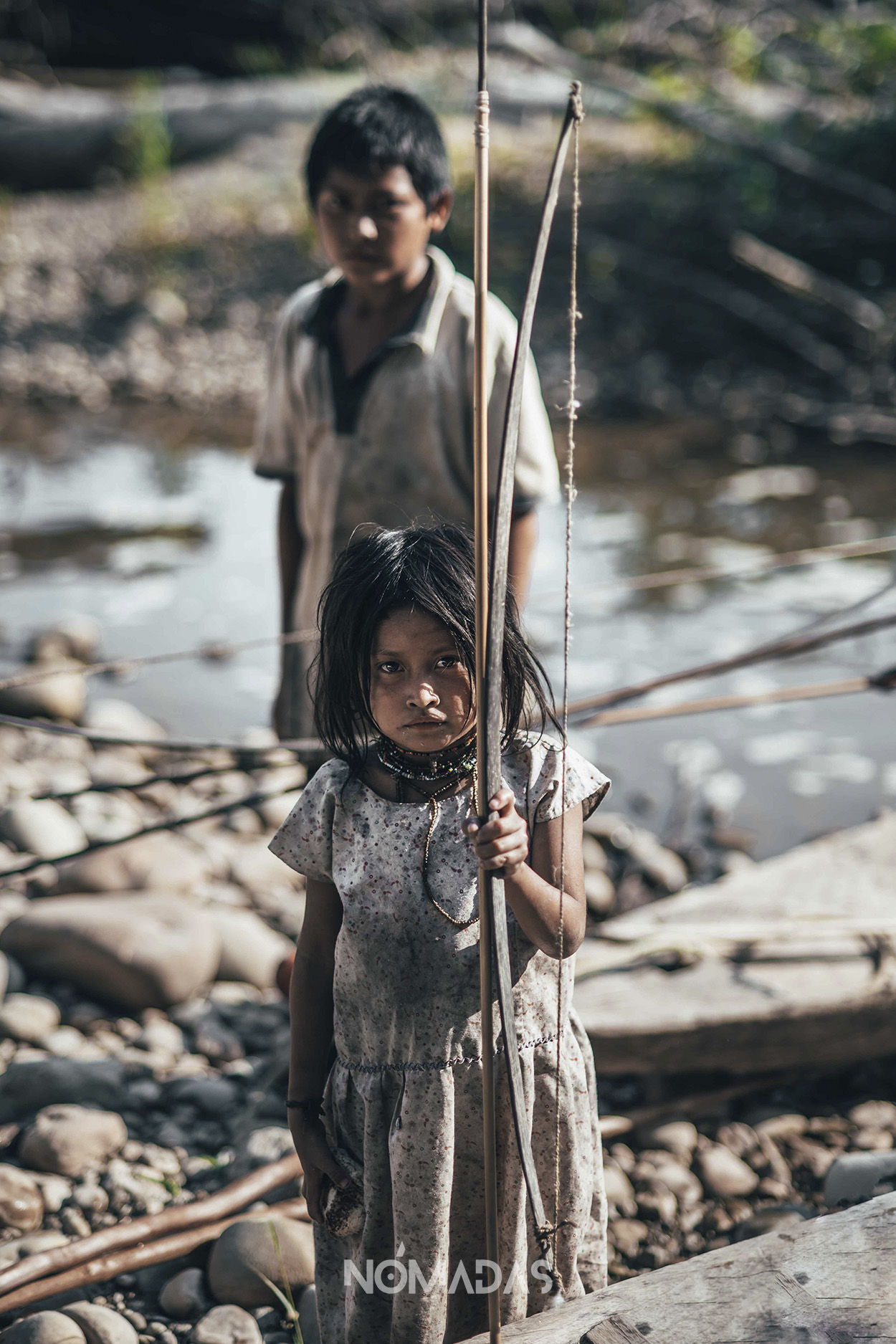
They learn to use the bow and arrow from an early age, to obtain the food provided by the jungle.
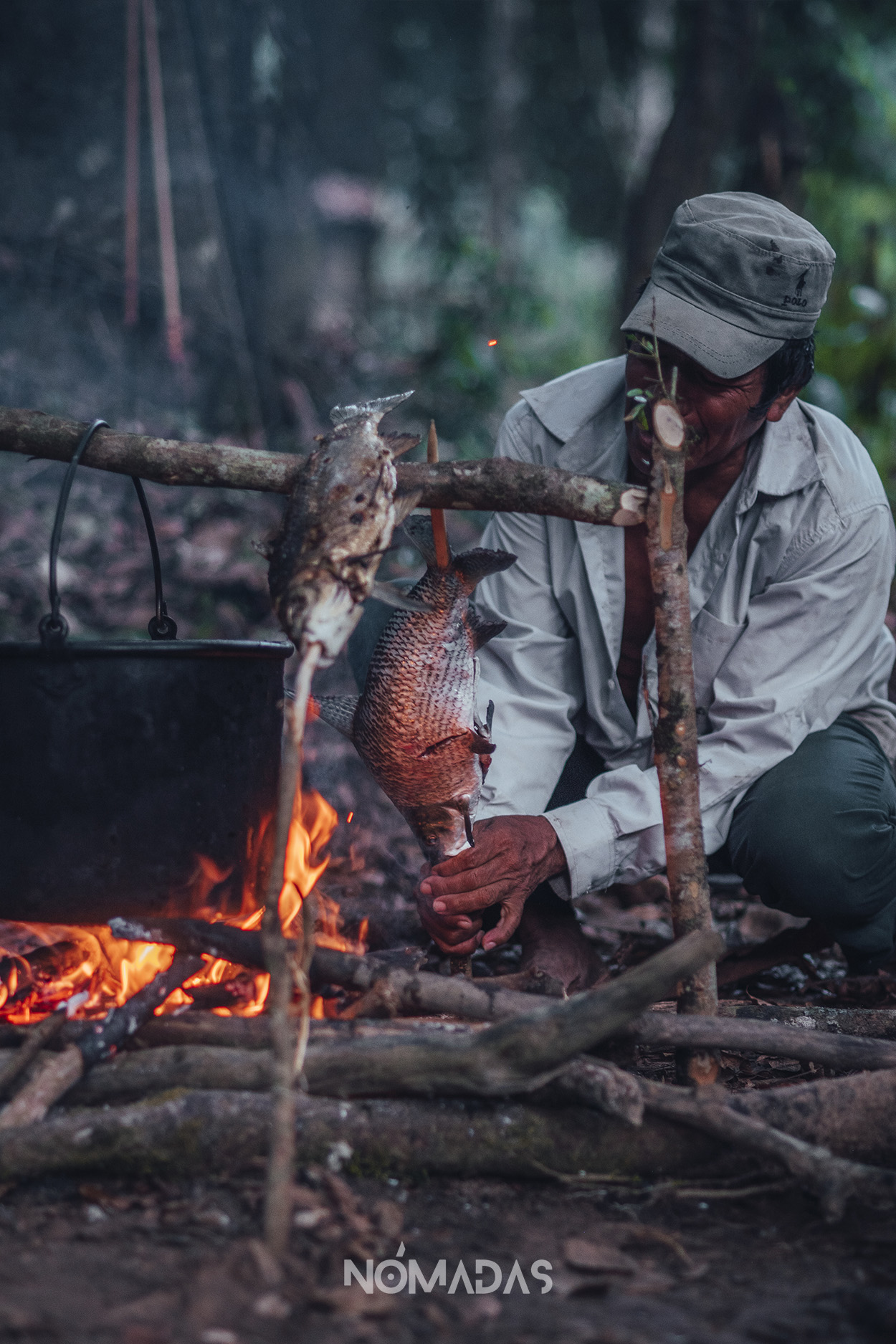
The food will be ready in a few minutes.
When a small plane lands, the children run to the edge of the runway and the dogs also run wild. Canoe drivers with Peke Peke – who have already heard the metallic sound of the craft – are ready at the harbor, which is reached by crossing the community from end to end. If you open your eyes and walk through Oromomo with a hunger for knowledge, you will see the friendly looks of the Tsimanes and Yuracarés who, in addition to greeting with their eyes, also raise their hands and, then, it is difficult not to feel at home.
Amazed by the grandeur of nature, they stayed for a month and were also in the transition zone of two biomes, between the plains and the mountains, where there are endemic species that have not yet been recorded.
Some conversation may also arise in a short period of time. Some will say that the dorado is allowing them to have economic income that they can invest in services for the communities, as was the case with the water purification plant and the Internet service that allows them to communicate with the rest of the world.
Dionicia Herbi will be on one of the rafts. During the one-hour trip that will end at the Pluma Lodge, one of the three lodges of the Tsimane fly-fishing and return project, she will set her gaze on the horizon and her voice will be a stone that will awaken when she is on dry land. During the trip, she will see, with a never-sleeping wonder, the birds flying alongside the canoes, the white sandy beaches on the Sécure River and the mountain ridges that will appear as the sun sets.
Four Peke Peke will transport the visitors who have arrived to fish under the catch-and-release fishing modality. Two indigenous people will be in each canoe. One of them will steer at the stern of the boat, piloting with ancestral skill, spotting the sharp bends to slow down and then propel himself with the grace of a juggler on the seemingly endless straights. Another will be at the bow, carrying a long pole (called singa) with which he will help to push when the low waters call him so that the trip not only remains pleasant, but also safe and does not stop. The sun will lower like a blind the light that will say goodbye to the day between the curves of the mountains.
Afterwards, at Pluma Lodge, Dionisia will take over the kitchen and will be responsible for cooking for the indigenous workers who fill different positions in the fishing project for two weeks.
It is already dark and the plantain mash she has prepared has been enjoyed by all, a dozen men who work as pilots of the canoes, as fishing guides.
Dionisia says that she has nine children, that she does not know how old she is, that she cooks the indigenous customs: in the morning: orange leaf tea; for lunch: grilled shaddock or rice stew with yucca, with corn, with boiled plantains….
Dionisia also makes handicrafts from some of the vegetation that grows freely in the jungle. She says that sometimes she sells them to tourists and that with the money she will earn from working for two weeks she will be able to cover the expenses of her daughter’s high school graduation.
—She wants to study to be a doctor. But that will be when we can send her to college. In the meantime, she’ll be at my house. She will get married, nobody knows. I have many grandchildren, says Dionisia, who is happy because the men have brought enough firewood for her not to go looking for it far from the lodge.
—They say the tiger is coming out, he says.
In the background, the murmur of the mountain scintillate like a soundtrack of reality.
***
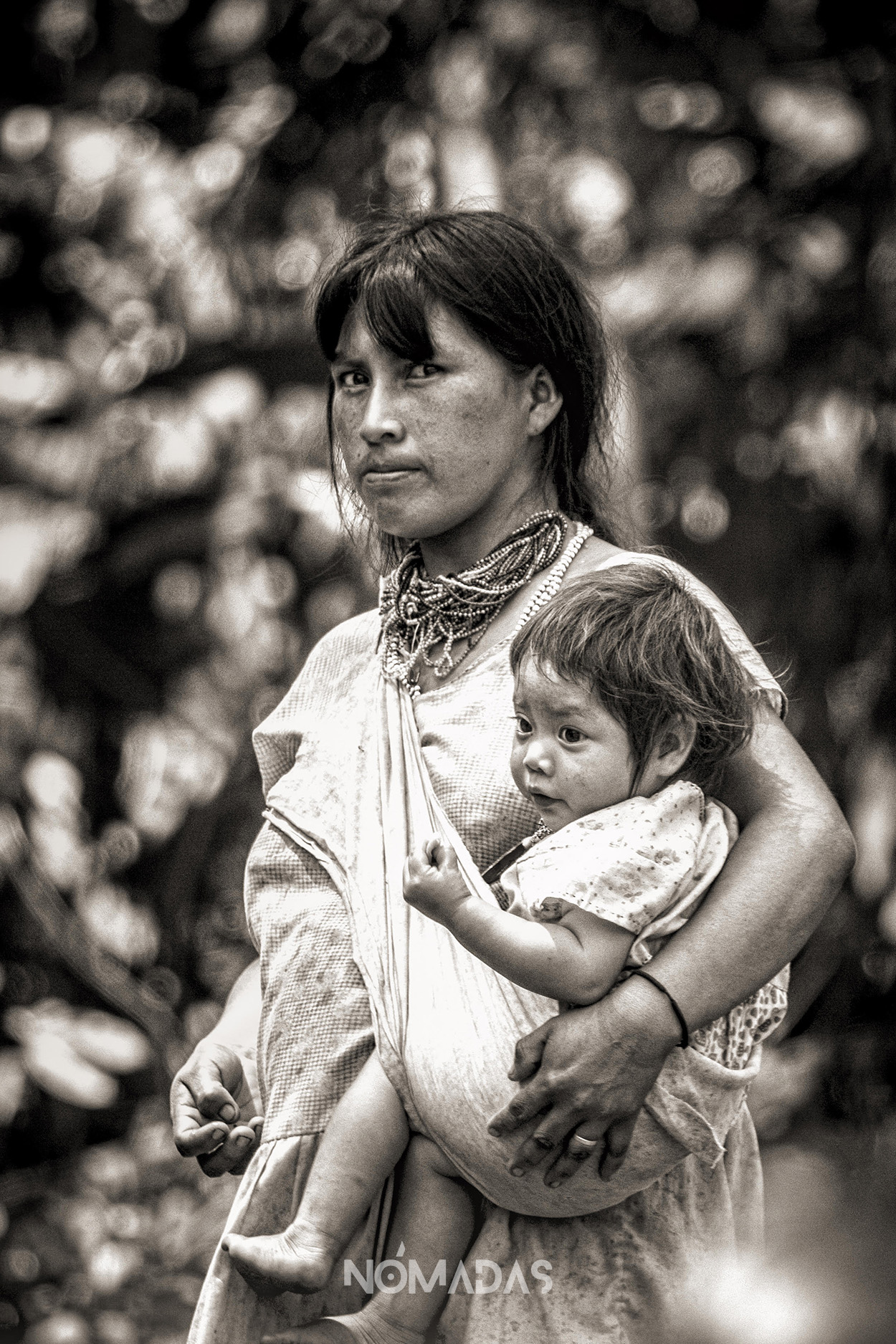
A Tsimane mother, carrying her baby, along the jungle trails.
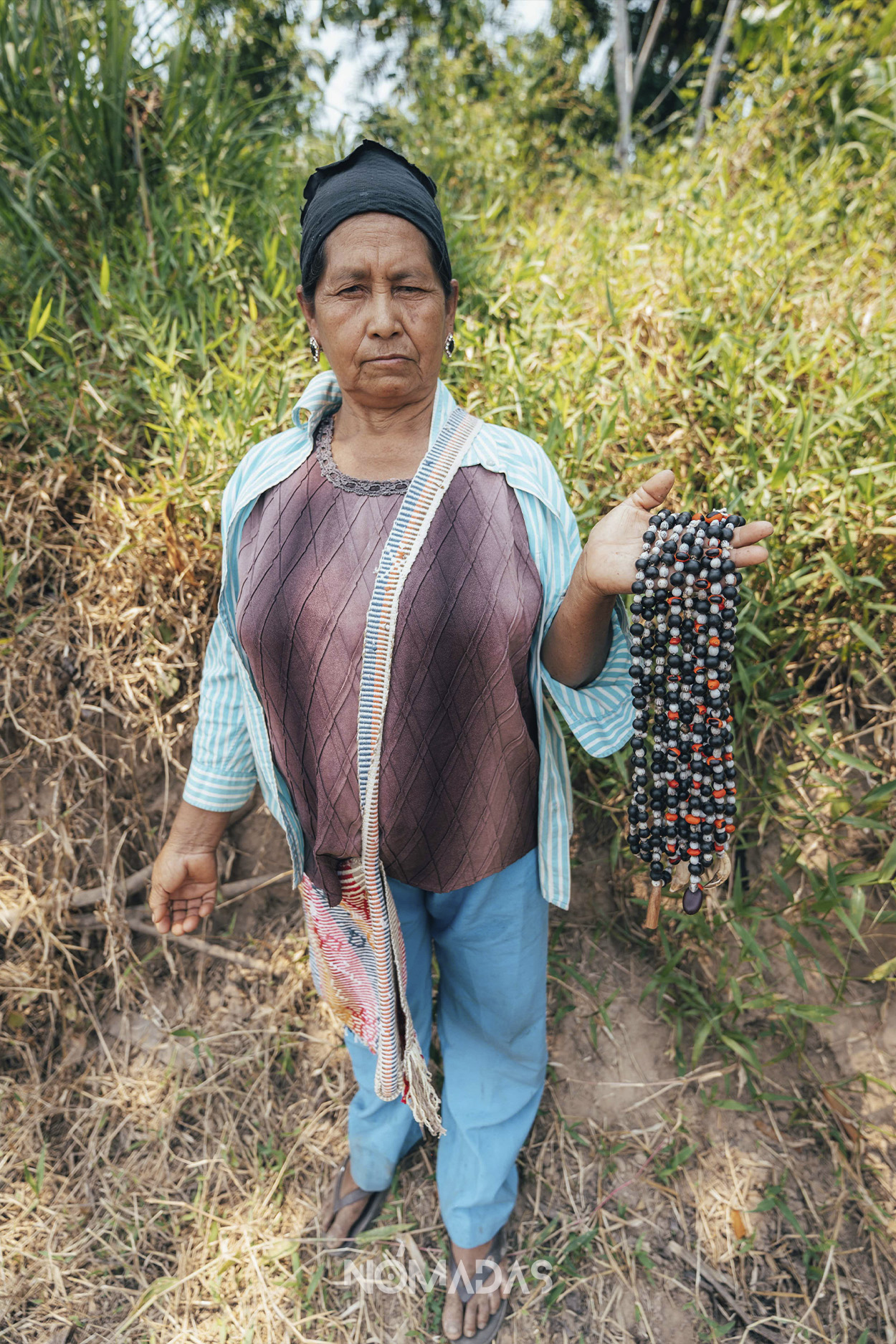
Laborious hands produce handicrafts that are offered to tourists arriving from distant lands.
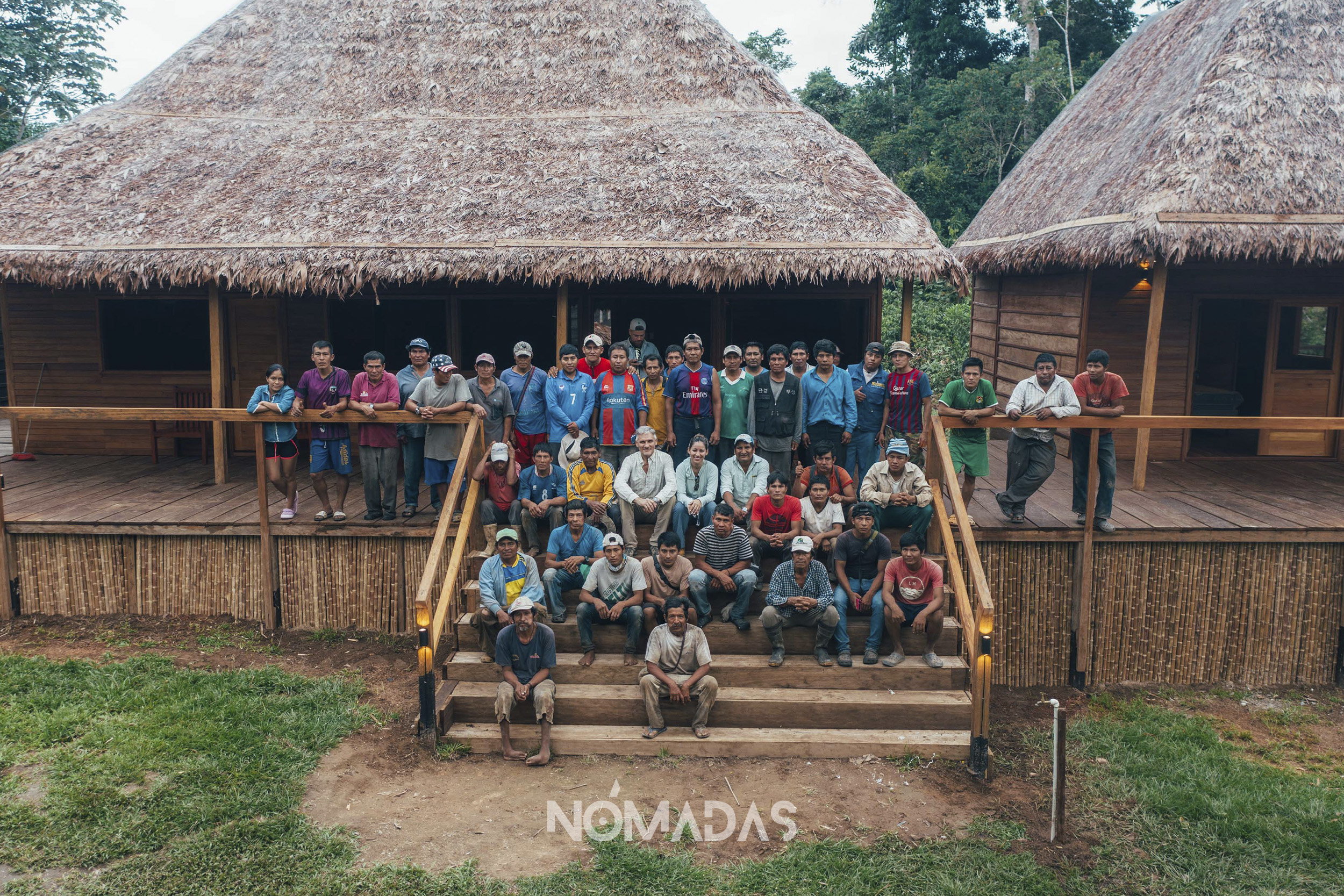
The Tsimane project team, proud, in one of the huts, deep in the TIPNIS.
STAFF:
DIRECTION AND TEXTS: Roberto Navia. PHOTOGRAPHY: Daniel Coimbra. TRANSLATION IN ENGLISH, MULTIMEDIA AND SOCIAL NETWORK EDITOR: Lisa Corti. PRODUCTION MANAGER: Karina Segovia. WEB DESIGN AND DEVELOPMENT: Richard Osinaga.
Revista Nómadas – Nomads Journalism ©2023
Te contamos desde el interior de los escenarios de la realidad, iluminados por el faro de la agenda propia, el texto bien labrado y la riqueza poética del audiovisual y de la narrativa sonora, combinaciones perfectas para sentir el corazón del medioambiente y de los anónimos del Planeta.
